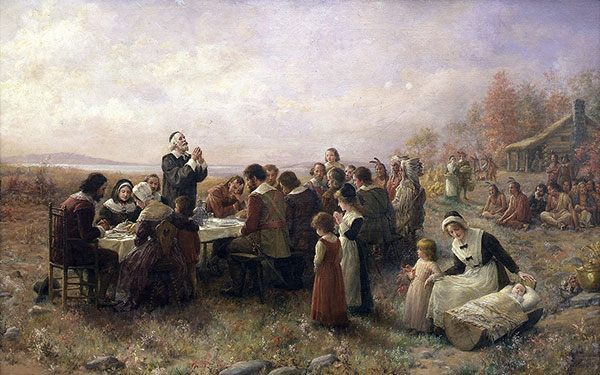Describe a Settlement
 "The First Thanksgiving at Plymouth" (1914), by Jennie A. Brownscombe
"The First Thanksgiving at Plymouth" (1914), by Jennie A. BrownscombeImage Source: Stedelijk Museum De Lakenhal
What did you learn about early settlements from reading the four case studies? Write a summary on page 4 in your Engineering Portfolio of the successes and failures colonists had while trying to meet their needs.
Be sure to answer the following questions in your summary:
- How did the geographic characteristics of the settlements guide the choices that the colonists made as they tried to meet their needs?
- What might the colonists have done differently to better meet their needs?
